Why Rosé of Malbec
- May 17, 2017
Rosé, to me, signals the advent of Spring, and after this year’s Winter rain (almost double our normal rainfall total), we are ready for Rosé. Parke and I discovered Rosé back in 1985 on a trip to Provence, France – it was the perfect apéritif after a long day of touring the French countryside. Today, our family enjoys it as both an apéritif and as a dinner wine, but I have to admit, there is nothing better than sitting on our terrace, watching the sunset with a glass of Rosé.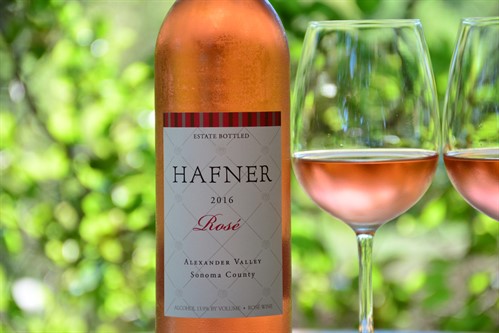 We began making Rosé for ourselves 15 years ago, just a barrel’s worth that we then bottled up and gave away to family and friends. On many levels, Rosé is quite simple – it is a red wine made in the white wine style – and to accomplish this, we use the traditional French technique of “saignée.” When the red grapes arrive at the winery, there is always a little bit of juice, known as “free-run”.
We began making Rosé for ourselves 15 years ago, just a barrel’s worth that we then bottled up and gave away to family and friends. On many levels, Rosé is quite simple – it is a red wine made in the white wine style – and to accomplish this, we use the traditional French technique of “saignée.” When the red grapes arrive at the winery, there is always a little bit of juice, known as “free-run”.
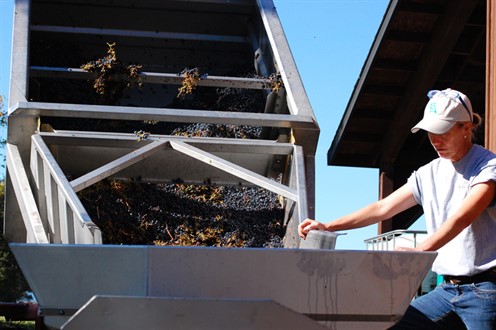 To intensify the color of the red wine, we drain off the free-run thereby darkening the red wine’s color. Rather than discard the free-run, we fermented it dry to produce our first Rosé.
To intensify the color of the red wine, we drain off the free-run thereby darkening the red wine’s color. Rather than discard the free-run, we fermented it dry to produce our first Rosé.
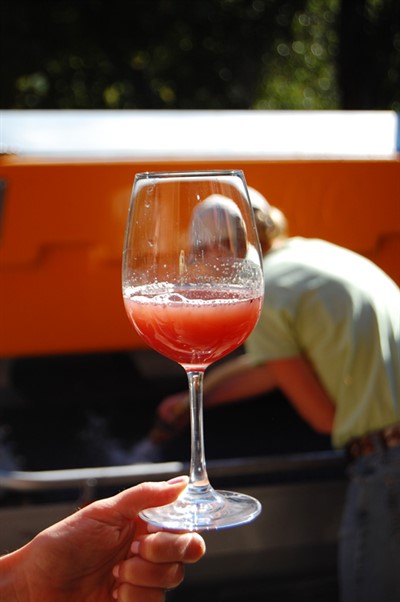 Key to Rosé is both its color and its aroma. That is why we use Malbec for our Rosé – Malbec juice resembles bright pink bubblegum and is fruit-driven with aromas of watermelon, raspberries and violets. The challenge of making Rosé is retaining its color. At the beginning of fermentation, we always worry that the juice is too dark, but as it ferments the color lightens and by bottling the hue has changed from its original dark raspberry to primrose pink. Each year’s color is slightly different, but the winemaking style remains the same.
Key to Rosé is both its color and its aroma. That is why we use Malbec for our Rosé – Malbec juice resembles bright pink bubblegum and is fruit-driven with aromas of watermelon, raspberries and violets. The challenge of making Rosé is retaining its color. At the beginning of fermentation, we always worry that the juice is too dark, but as it ferments the color lightens and by bottling the hue has changed from its original dark raspberry to primrose pink. Each year’s color is slightly different, but the winemaking style remains the same.
Before we release our wines, we have a competitor tasting. We buy five to nine different wines to compare against our own. The tastings are always blind. The Rosé tasting is our most challenging tasting because Rosés can be made from any red grape. A Rosé of Pinot Noir is distinctly different from a Malbec Rosé. Colors can vary from straw yellow to muted orange to bright pink and flavors range from strawberries and violets to red plums and dried herbs.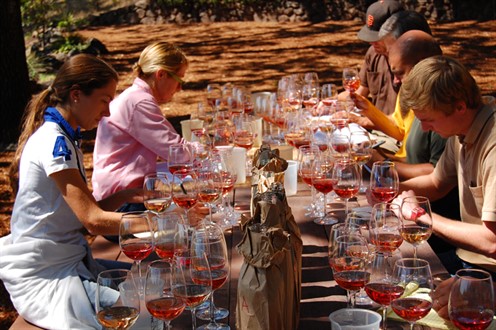
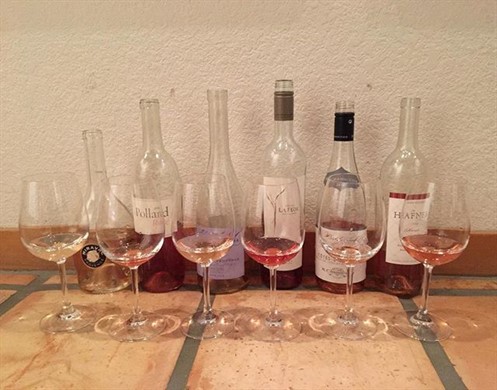
I have always thought that Rosé should be enjoyed when it was young. Then last week, we discovered a bottle of 2013 Rosé tucked behind some other bottles. With a bit of trepidation, we opened it up and to our surprise, it was delicious, not as fruit-forward and bright as the 2016, but it still had a lovely rose pink color and aromas of watermelon candy.
Rosé and Summer go hand in hand – perfect to drink as an apéritif; I love swirling a glass of Rosé, enjoying the aromas of watermelon, strawberries, raspberries and rose petals. I also enjoy it with dinner, preferably with salmon or chicken. While we think of Rosé as a Summer wine, it is our family’s favorite wine at Thanksgiving…Rosé and turkey are quite a good match, but we always have a bottle of Chardonnay and Cabernet on hand.
We invite you to learn more about how to make Rosé wine here and if you would like to try our Rosé, it is available from April until it sells out. Email us or shop here to place an order.



